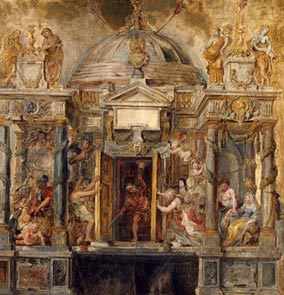which
Pop Art
 Pop art (English pop-art, from popular art to public art) is a trend that took shape first in modern art and then in various spheres of popular culture of the 20th century.
Pop art (English pop-art, from popular art to public art) is a trend that took shape first in modern art and then in various spheres of popular culture of the 20th century.
Pop art originated in the 50s of the 20th century in the USA and Great Britain and finally won a “place under the sun” at the international exhibition in Venice (1964), defeating abstractionism. An American artist R. Rauschenberg received the main prize for “subject compilation” composed of combinations of colorful postcards and a scrap of a poster, clippings from illustrated magazines and a photograph of the assassinated President J. Kennedy. Continue reading
Kanoplasta from Tanagra
 The Greek words “tanagra”, “tanagryanka” about a hundred years ago entered the Russian language. They are now used to denote everything fragile, feminine and plastic. The artist V. Serov invented on its basis his term “tanagretika”, meaning beneath it artless, elegant, opposite to the cold and rational in art.
The Greek words “tanagra”, “tanagryanka” about a hundred years ago entered the Russian language. They are now used to denote everything fragile, feminine and plastic. The artist V. Serov invented on its basis his term “tanagretika”, meaning beneath it artless, elegant, opposite to the cold and rational in art.
The ancient city of Tanagra in Boeotia, in the north-east of the Balkan Peninsula, has gained wide popularity in recent times thanks to an archaeological sensation – finds of Tanagrian statuettes. Continue reading
Barbizon School of Painting
 Away from the noise of the capital, French painters of the last century chose the area around the royal residence of Fontainebleau, which since the times of Francis I has attracted noble hunters. As early as the 18th century, J.-B. Audrey wrote pompous scenes of royal hunting. After the tumultuous events of the Great French Revolution and the fall of Napoleon I, when the time of the festivities is gone, landscape painters frequent here. Continue reading
Away from the noise of the capital, French painters of the last century chose the area around the royal residence of Fontainebleau, which since the times of Francis I has attracted noble hunters. As early as the 18th century, J.-B. Audrey wrote pompous scenes of royal hunting. After the tumultuous events of the Great French Revolution and the fall of Napoleon I, when the time of the festivities is gone, landscape painters frequent here. Continue reading



